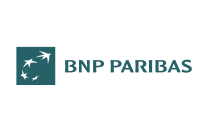In the era of data-driven marketing the ability to predict whether a user will perform a key action – such as a purchase, registration, or contact request – has become essential for optimizing acquisition, conversion and retention strategies. This predictive approach is known as propensity modeling.
What is Propensity Modeling
Propensity modeling involves training a supervised machine learning model capable of assigning each user a propensity score: an estimated probability that the user will perform a specific action within a defined time window.
Unlike traditional lead scoring based on static rules (e.g., +10 points for email opens), the predictive model learns from actual historical data – such as browsing behavior, past interactions, acquisition sources, and purchase history – to produce reliable and updatable estimates.
From a technical perspective, the most common models include:
- Logistic Regression, for simple and interpretable baseline;
- Gradient Boosted Decision Trees, for datasets with complex patterns;
- Neural Network architectures, for omnichannel environments with large volumes of sequential data.
The most relevant features include transactional variables (recency, frequency, monetary), behavioral signals (clickstream, engagement), contextual data, and historical campaign response.
The Action Prediction Module in the Bytek Prediction Platform
Within the Bytek Prediction Platform, the proprietary Action Prediction module implements an advanced propensity modeling system designed to accurately and continuously estimate the probability that each user will perform a high-value business action.
How it works
The Action Prediction module is based on a supervised and highly configurable approach that leverages first-party data and proprietary models to estimate the likelihood that a user will complete a relevant action. The main operational phases that enable the model are outlined below.
- Training on business-critical events
The model can be configured for any target event: an online conversion, a demo request, a booking, a high-margin purchase. - Input from sources integrated into the Marketing Cloud Data Warehouse
Data is sourced from CRM systems, eCommerce, apps, advertising, and customer care, consolidated into a single customer view powered by consented first-party data. - Output in activatable format
The propensity score is written into the user profile and can be used for personalized triggers, email/SMS automation, CRM enrichment, or optimized bidding.
Enabled Use Cases
The Action Prediction module supports numerous application scenarios that enhance a company’s ability to act promptly, precisely, and strategically throughout the funnel.
- Lead prioritization: dynamic contact classification based on conversion probability, helping sales and CRM teams focus on high-propensity prospects.
- Purchase intent identification: early detection of behavioral signals and micro-actions that indicate concrete user interest, useful for triggering targeted campaigns or nurturing commercial opportunities.
- Behavioral segmentation: definition of high-potential audiences through propensity thresholds for personalized campaigns across email, SMS, display, and paid channels.
- Predictive marketing automation: automatic activation of messages, workflows, or specific triggers based on propensity level, reducing latency between intention and action.
- Value-based bidding: transmission of the propensity score as a custom signal to advertising platforms, enabling bidding strategies calibrated on the expected economic value of a conversion, rather than generic likelihood.
- Churn prevention: monitoring negative changes in propensity to identify at-risk customers and intervene promptly with retention or win-back actions.
The Action Prediction AI model functions as a predictive layer natively integrated into the marketing, sales, and advertising infrastructure, allowing companies to transform behavioral signals into actionable decisions.
















